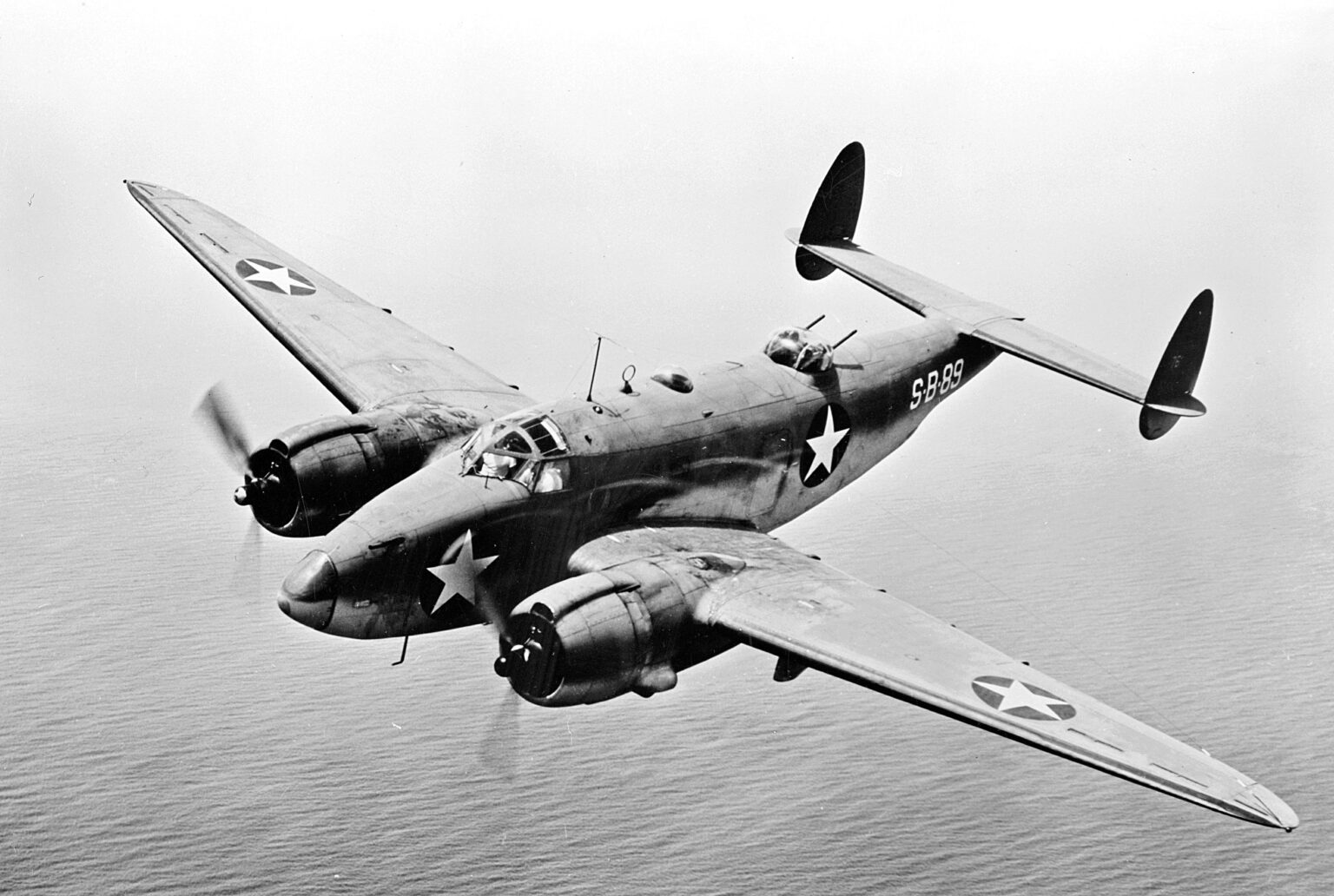
During the Second World War the popular Lockheed Model 18 Lodestar underwent several modifications to make it suitable for a number of combat roles. First entering service with the British Royal Air Force in 1942 as the Hudson, the modern all-metal, twin-engine medium bomber proved vulnerable during daylight bombing raids over occupied Europe. The aircraft found more success after they were transferred to the British Costal Command for use in maritime patrol, anti-submarine, and anti-shipping missions. Designated the PV-1 Ventura by the U.S. Navy the aircraft entered combat in the Pacific.
Undergoing major modifications in late 1943 the PV-1’s wing area was increased to improve lift and range. The bombardier’s position was eliminated, and armament was increased to five forward firing .50 caliber machine guns, a larger bomb load, and eight 5-inch rockets on wing mounted pylons. Re-designated the PV-2 Harpoon, the aircraft continued service through the remainder of the Second World War.
The museum’s PV-2 Harpoon Bureau Number 37216 was delivered to the US Navy in 1944. The aircraft was donated to the museum by Mr. Tony Ray Rocha.
SPECIFICATIONS:
Crew: four
Length: 52 ft
Wingspan: 74 ft 11 in
Height: 11 ft 11 in
Loaded weight: 36,000 lbs
Maximum speed: 282 mph at 13,900 ft
Service ceiling: 23,900 ft
Range: 1,790 miles
Engines: Two Pratt & Whitney R-2800-31s with 2,000 horsepower each
Bu. 37216
Construction #: 15-1182
Model #:15-27-01
Join us in preserving aviation heritage. Your donation supports the meticulous restoration of historic aircraft, ensuring future generations can experience these flying legends up close. Every contribution brings us one step closer to getting them back in the sky.